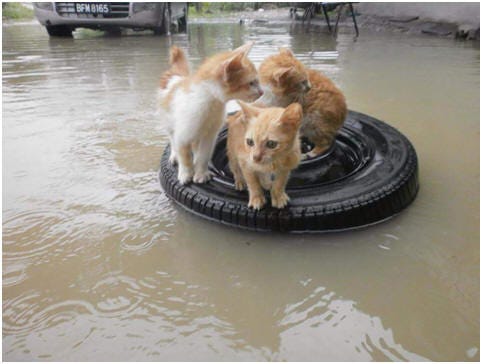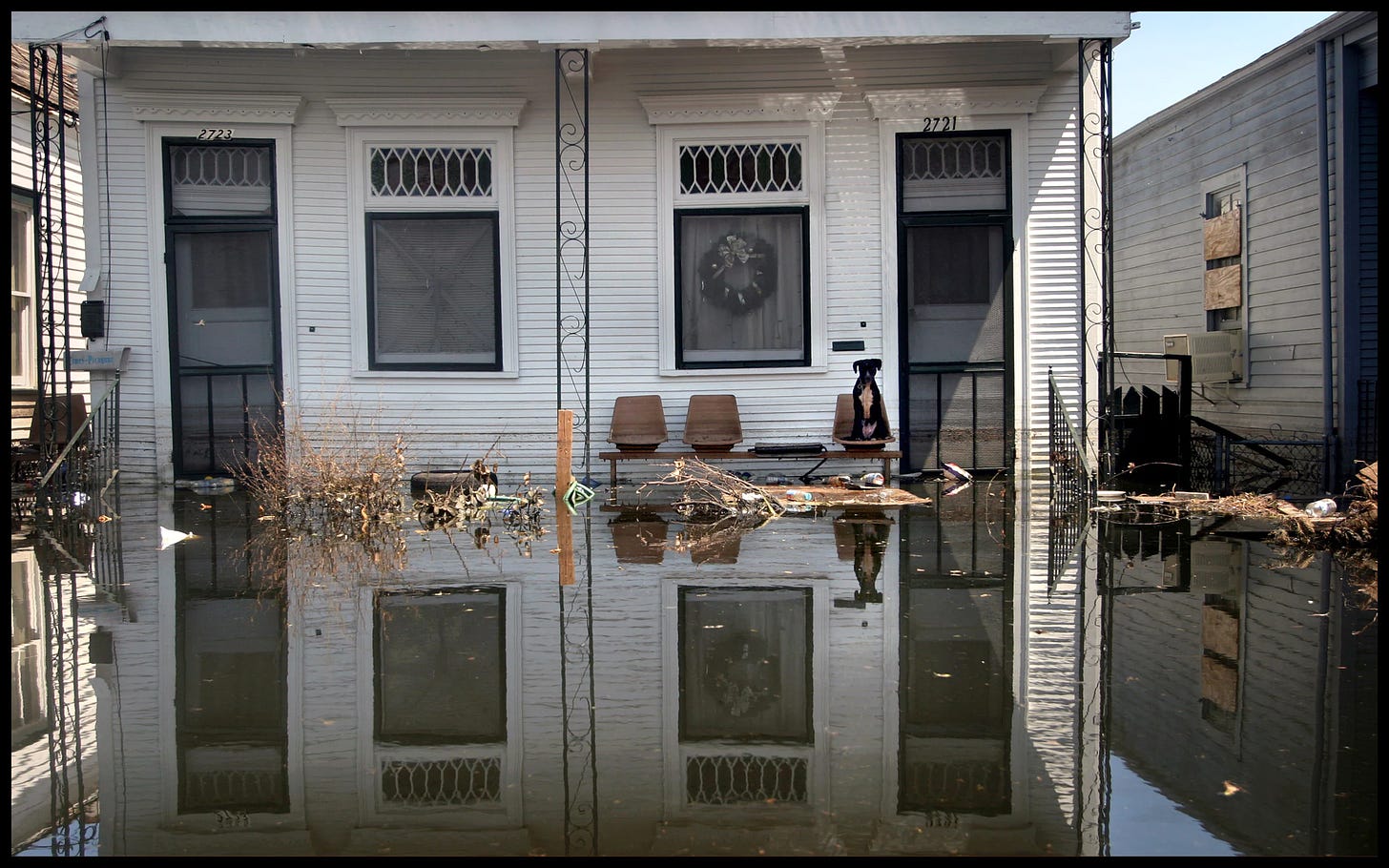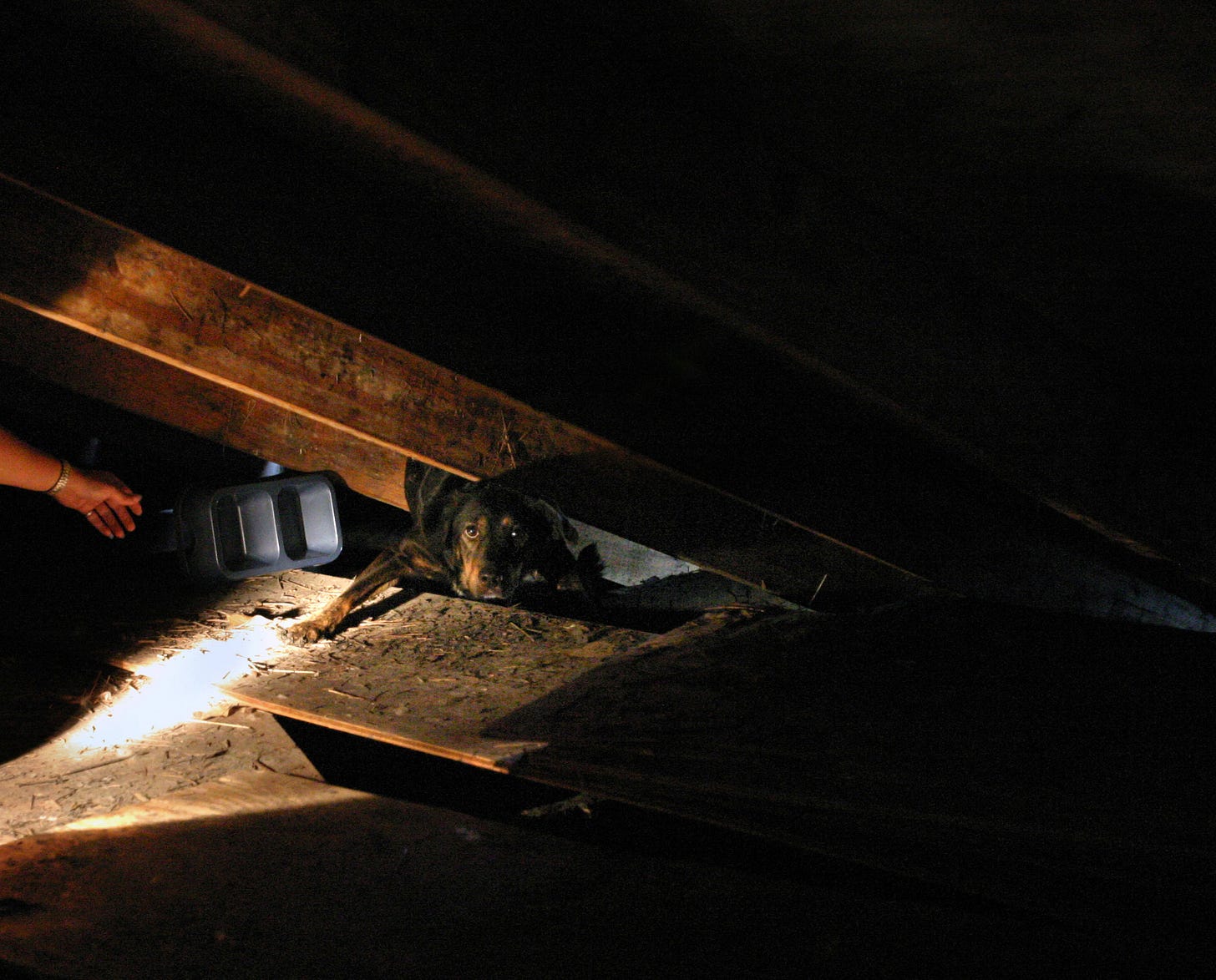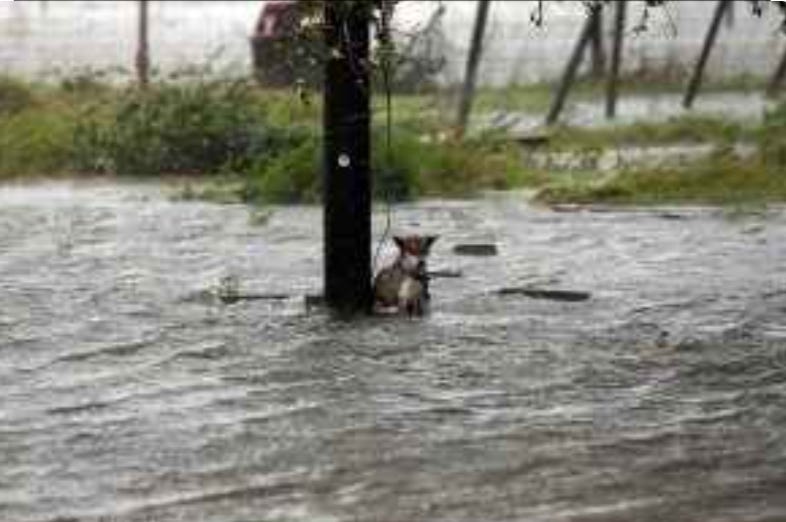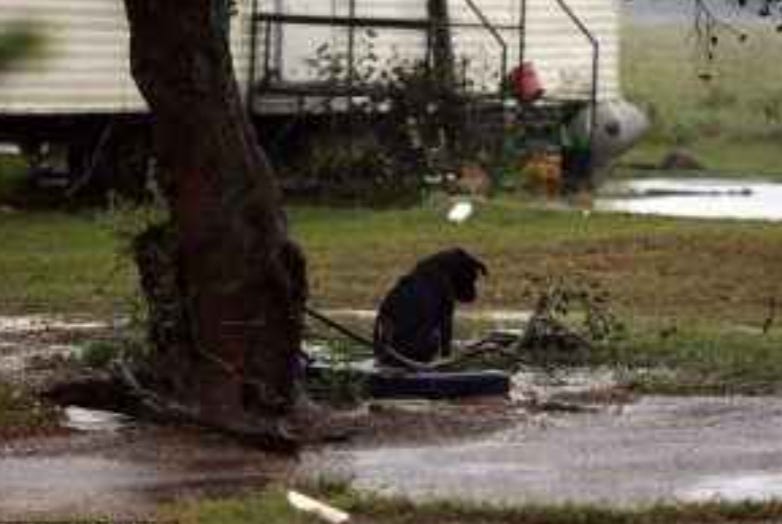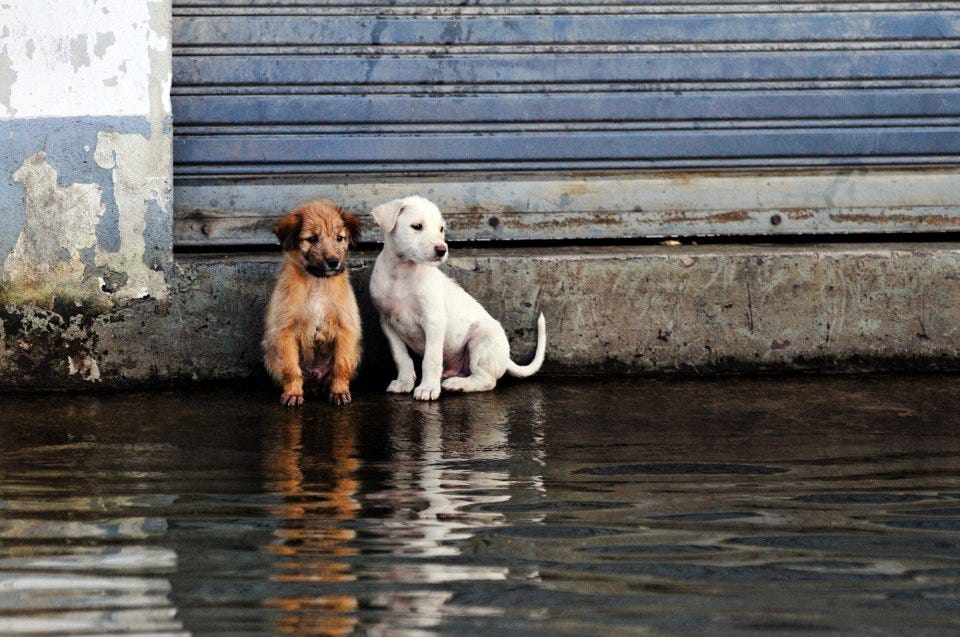***Warning: some disturbing images below (not gory or gross, just heartbreaking)
When natural disasters hit, the standard human reaction is to flee—when able—or to hunker down and try to ride it out. Sometimes, the incident happens without warning, like earthquakes or landslides, so post-event survival is the only focus. Sadly, this is a reality that people across the globe are living with in ever-increasing numbers and in greater severity as a result of climate change and environmental destruction.
With the internet constantly at our disposal, we know what happens to people, but what happens to animals?
It is a widely held belief that animals have some intuitive, advanced knowledge of disasters. Whether this is true, however, is hard to prove. The United States Geological Survey had this to say about the predictive abilities of animals in relation to earthquakes. “[C]onsistent and reliable behavior [of animals] prior to seismic events, and a mechanism explaining how it could work, still eludes us.”
Looking at the aftermath of specific disasters does not clarify the question any further. For example, numerous reports following the 2004 Indian Ocean tsunami indicated a notable absence of animal carcasses following the event that killed around 230,000 people.
Unfortunately, given the massive scale of human death, these claims were neither confirmed nor explained. When Mount Saint Helens erupted in May of 1980 in Washington, USA, nearly 7,000 deer, elk and bear were killed as well as nearly all birds and most non-burrowing small mammals in the area. Although the eruption occurred on May 18, there were nearly 100 earthquakes recorded in the week prior.
Perhaps asking whether animals can sense impending disasters is the wrong question. Whit Gibbons, an ecologist at the University of Georgia, put it well by saying,
I do not doubt that many animals detect certain natural signals, such as the early tremblings of an earthquake, long before humans. This means they have opportunity to react before we can. But to think they are reacting any differently from someone who runs for an exit at a shout of ‘fire’ is to give wildlife more credit than is deserved.
Merely sensing the event early does not bestow on them any elevated knowledge of how to react to it. In the case of the tsunami, for instance, some animals may have escaped simply by their normal reaction to a fear stimulus. Fast animals tend to prioritize fleeing before hiding from danger, so one would expect animals like antelope to run for cover—and quickly—which would have allowed them to escape the perils of the tsunami as it hit the shore.
From a simply logical standpoint, many animals can detect indicators of certain disasters well ahead of humans. Whether it is their incredible olfactory senses or their extraordinary ranges of hearing, animal senses are generally far superior to humans. But, we also know that it is difficult or impossible to predict how any specific animal or species will react to such indicators.
As a means of an early warning system, then, animal behavior is not a reliable tool. Anyone with a pet, especially in an area where the use of fireworks—or maybe can-openers—is common, probably knows this. For better or worse, humans are better served by technological and scientific methods for reliable advanced warning.
Emergency services and organizations regularly provide advice for preparing for disasters. Indeed, I have written just such a work for larger institutions. People are told to have emergency kits organized ahead of time, with items such as food, water, medical supplies, flashlights, and so forth. They are advised to have an escape plan that includes a meet-up location for family members. These plans, however, far too often forget about the furry members of the family.
Domesticated animals mostly live in a small space, geographically speaking. Thus, when that space becomes uninhabitable, household pets must rely almost entirely on their human caretakers to look after them. Unfortunately, the grim realities of natural disasters tend to distract human caretakers in the moment, and the situation is worsened in direct correlation to their lack of preparedness. As Monica Frenden of Feline Lifesaving at Austin Pets Alive stated, “Wherever there’s human devastation, there’s animal devastation. If people can’t get out, animals can’t get out.”
Still, even when the humans can get out, sometimes the animals are left behind. This fact also directly correlates with the severity of the disaster. Take New Orleans, for example. Hurricane Katrina wrought a biblical level of disaster there in 2005 as levies breached allowing the sea to practically consume the entire city. Roughly 250,000 to 600,000 pets and livestock were left behind, many stranded on rooftops or inside structures. Carol Guzy of the Washington Post captured numerous heartbreaking images of that event (with two examples below; see the full story here).
Sometimes people simply don’t have the resources to bring their pets with them to escape. In other cases, the government forbids it. When the nuclear plant at Chernobyl exploded back in 1986, the government demanded that the evacuating humans leave their pets behind for fear of increasing the chance of spreading radioactive contamination. (What happened next was awful, but a population of descendants of those abandoned pets lives on and has a fascinating story that you can read here). Many evacuees of Katrina received the same instructions when fleeing that disaster. Rescuers simply lacked the space or means to exfiltrate the animals.
Some people held out, demanding that their pets go with them. This had mixed results at the time, but led to substantial changes later, which I discuss below. Still other people simply abandon their pets out of the misguided belief the animals can survive on their own; this is especially true for cats. Finally, and most incomprehensibly, some people just lack any compassion for what happens to the animal.
Two dogs left chained up and abandoned during Hurricane Harvey in Texas, August 2017
People who provide for animals in good times owe those same pets a responsibility to care for them in the bad. The ASPCA reports that “While more than 90 percent of pet owners said they would bring their pet with them during an evacuation, only 46 percent of pet owners have a disaster preparedness plan in place.” It is imperative that you include your pets in your disaster planning. According to the same report, 30 percent of people who abandoned their animals did so because they claimed they did not have enough time when the disaster hit.
So, what to do?
Put together a go-bag for your pets with some food and, if they take them, medicines. Make sure they have a tag with your phone number or email address, particularly if they aren’t microchipped. Remember that weather affects them too, so plan for cold and wet conditions. Figure out how they will accompany you if you must travel. Will you carry them in a bag or crate? Do you have a leash and harness at the ready for bigger pets, like medium to large-size dogs?
I recommend a harness over a collar as it provides added security for the pet, and makes it easier to lift them out of floodwaters, boats, or other places. I have conducted several flood rescues. People come to rescuers, but pets sometimes won’t. Having a stable means to grab hold of them might make the difference between life and death. If possible, designate a family member or members to take primary responsibility over them, so they are not forgotten in times of critical decision-making.
Following Katrina, a law was passed in the United States called the PETS Act, which requires municipalities to include pets in their disaster planning. In response, governments now set up shelters where families can stay with their pets during evacuations. Others have created “portable pet shelters” to care for those pets separated from their families.
Despite it being a federal law, the PETS Act largely puts the responsibility on implementing it to local authorities. Some places, especially those that more routinely face disasters, have more organized plans than others. In other countries, private groups or NGOs handle these duties.
The Global Alliance for Animals and People, for instance, provides a variety of disaster response services in Latin America. The Humane Society International travels to disaster zones around the world to help care for animals, including in Nepal after the Gorkha Quake of 2015. The International Fund for Animal Welfare and World Animal Protection both engage in similar activities. And surely, many more do that I have not mentioned here.
I encourage you to support any organizations of these types if you can. I am not recommending any specific one, but this kind of work often struggles to receive adequate funding. And the animals they help don’t get a vote in funding meetings or a say in disaster planning. Yet, when disaster strikes, they will be there with their people to the end, even if their people don’t give them the same benefit.
* * *
Visit the Evidence Files Facebook and Medium pages; Like, Follow, Subscribe or Share! You can also connect with me on LinkedIn.



